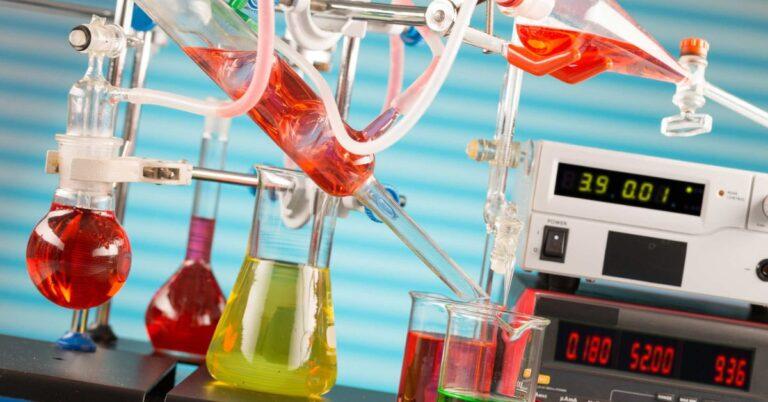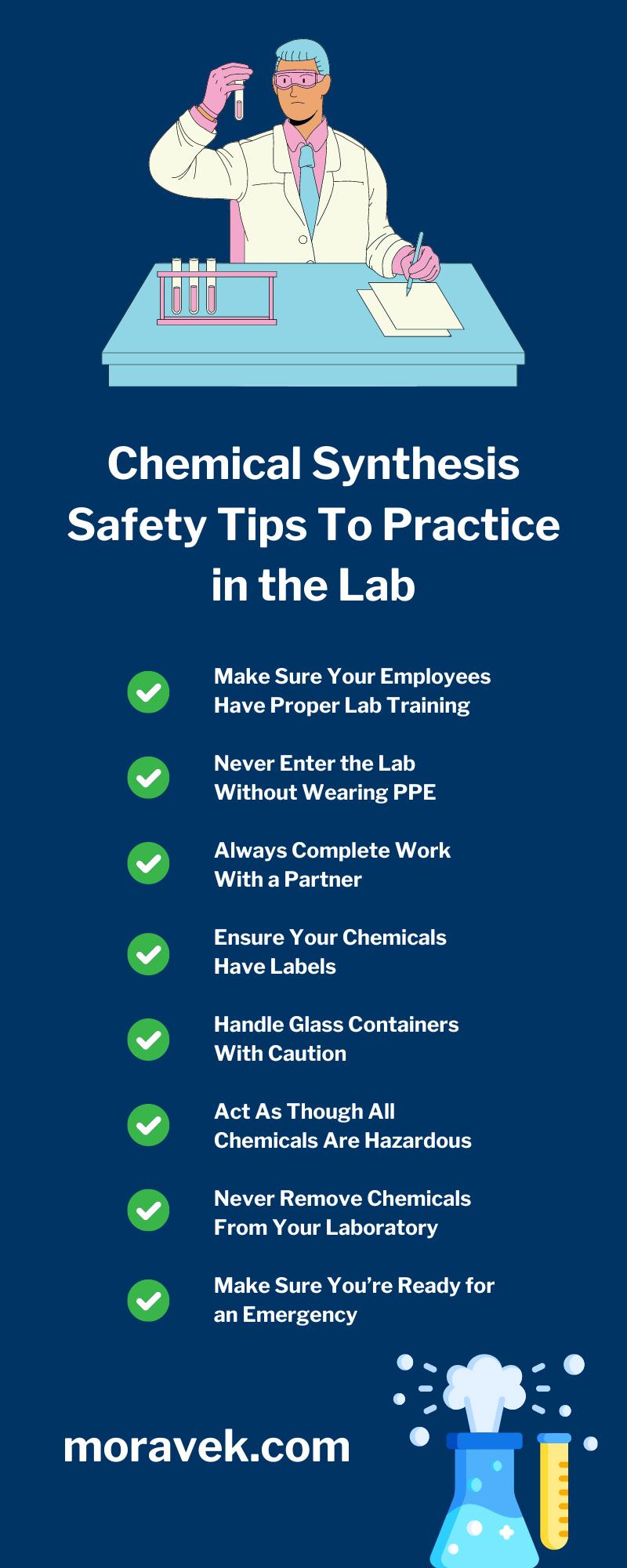
Chemical synthesis is a common process in laboratory settings, involving the combination of different compounds to create new substances. However, despite how often lab associates perform this procedure, they must follow stringent protocols during the process. This article outlines several chemical synthesis safety tips to practice in the lab to protect researchers and maintain a secure working environment. By following these guidelines, laboratories can foster a culture of safety and compliance, thereby preventing accidents and ensuring successful experimental outcomes.
Make Sure Your Employees Have Proper Lab Training
One way to ensure that laboratories don’t experience accidents during chemical synthesis is to require all employees to undergo proper training. They should be well-versed in how to work with chemicals, respond to emergencies, and operate lab equipment.
In addition, make sure that you train your employees on lab safety more than once. Provide them with updated courses on the latest safety protocols and best practices. By investing in thorough training, laboratories can nurture a safety-conscious environment.
Never Enter the Lab Without Wearing PPE
Another chemical synthesis safety tip to practice in your lab is ensuring that employees always go to work while wearing their personal protective equipment (PPE). This gear is essential for safeguarding individuals from the myriad risks present in a laboratory environment.
Before entering the lab, ensure you and your lab associates equip yourselves with items such as lab coats, gloves, a face shield, and appropriate footwear. Proper PPE acts as a barrier against chemical splashes, spills, and contact with hazardous substances, significantly minimizing the risk of injury or contamination. Employees should never enter the lab without it.
However, your obligation with PPE goes beyond merely wearing it. You and your workers should regularly inspect and maintain your PPE to ensure it is in good condition and offers adequate protection. Adherence to PPE protocols is a fundamental requirement for maintaining a safe laboratory setting.
Always Complete Work With a Partner
Working with a partner in the lab while performing chemical synthesis also enhances safety and efficiency. A second set of eyes can help you identify potential hazards that you may overlook, reducing the likelihood of accidents.
Having a partner can also be beneficial in an emergency. You will ensure that immediate assistance is available, whether it involves administering first aid or calling for additional help. Collaboration also fosters an environment where employees are more likely to follow safety protocols, as partners can remind each other of best practices.
Moreover, working with a partner can improve the quality of the research by promoting cross-checking of data and procedures. Therefore, pairing up can be both a safety measure and a means to achieve more reliable scientific results.
Ensure Your Chemicals Have Labels
You can also keep yourself safe during the chemical synthesis by ensuring your compounds have labels. Each chemical container should have a clear, easily readable label that includes the chemical’s name, concentration, and any relevant hazard information.
Labels should also feature proper storage instructions and expiration dates to prevent the use of compromised or degraded substances. This will prevent dangerous mix-ups and enable quick identification during emergencies. Failing to label chemicals properly can lead to severe mishaps, putting your personnel and research at risk.
Handle Glass Containers With Caution
Your laboratory can also prevent injuries and accidents during chemical synthesis by advising its staff to handle glass containers carefully. Before using them, make sure you or another employee inspects glassware for cracks or defects, as compromised glass can break easily under pressure or temperature changes.
Using appropriate carriers or transport devices when moving glass containers will also reduce the risk of dropping or knocking them over. In addition, avoid applying excessive force when inserting stoppers or connecting glass components, as this can cause breakage.
If glass containers break, use proper cleaning tools like dustpans and brushes and dispose of them in designated glass disposal containers. Adhering to these precautions ensures your safety and the functionality and longevity of the glassware you use in your research.
Act As Though All Chemicals Are Hazardous
Adopting a mindset that treats all chemicals as potentially hazardous is fundamental for maintaining a safe laboratory environment during synthesis. This precautionary approach encourages meticulous handling and minimizes the risk of accidents.
Always assume that a chemical can pose serious health or safety hazards unless proven otherwise. This means adhering strictly to safety data sheets for information on proper handling, storage, and disposal procedures.
Using appropriate protective measures, including PPE and fume hoods, can greatly reduce exposure to harmful substances. By practicing this level of vigilance, you can protect yourself and your colleagues from unexpected chemical hazards.
Never Remove Chemicals From Your Laboratory
Never remove chemicals from your laboratory, as doing so can lead to hazardous situations. Ensure your employees store chemicals in controlled conditions to minimize exposure, spills, or contamination risks.
Transporting chemicals outside the lab environment can expose individuals and the community to potential dangers. Additionally, external environments lack the necessary emergency equipment needed to deal with chemical accidents effectively. This practice will allow you to protect your personnel and the broader community and environment from unnecessary risks.
Make Sure You’re Ready for an Emergency
Preparation is key to handling emergencies in the laboratory. Ensure you know the location and proper use of all emergency equipment, including fire extinguishers, eyewash stations, and safety showers.
You should also conduct regular emergency drills to reinforce response procedures and improve the overall readiness of your lab’s personnel. Remember to also have a list of emergency contact numbers available and ensure all team members know its location.
Additionally, maintain a well-stocked first aid kit and check it periodically to replace any used or expired items. Being proactive in your emergency preparedness can significantly reduce the impact of accidents and enhance the safety of everyone in the lab.
Adhering to stringent safety protocols in the laboratory is paramount to ensuring the well-being of all personnel and the success of your chemical synthesis activities. You can also ensure that your operations are safer by using custom organic synthesis services from Moravek. Our skilled staff members have experience assisting clients internationally and can help you create more effective products for your client base.

